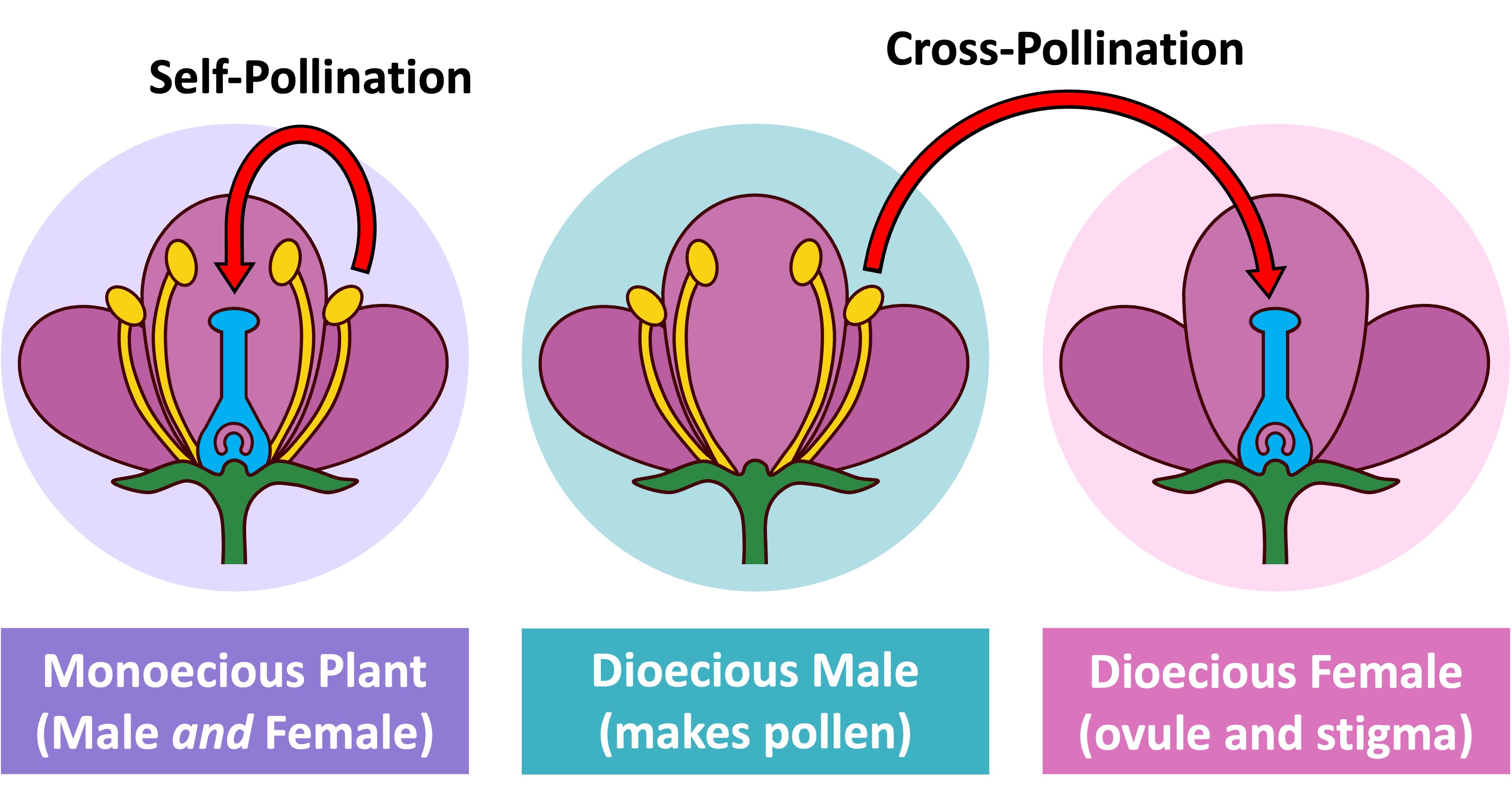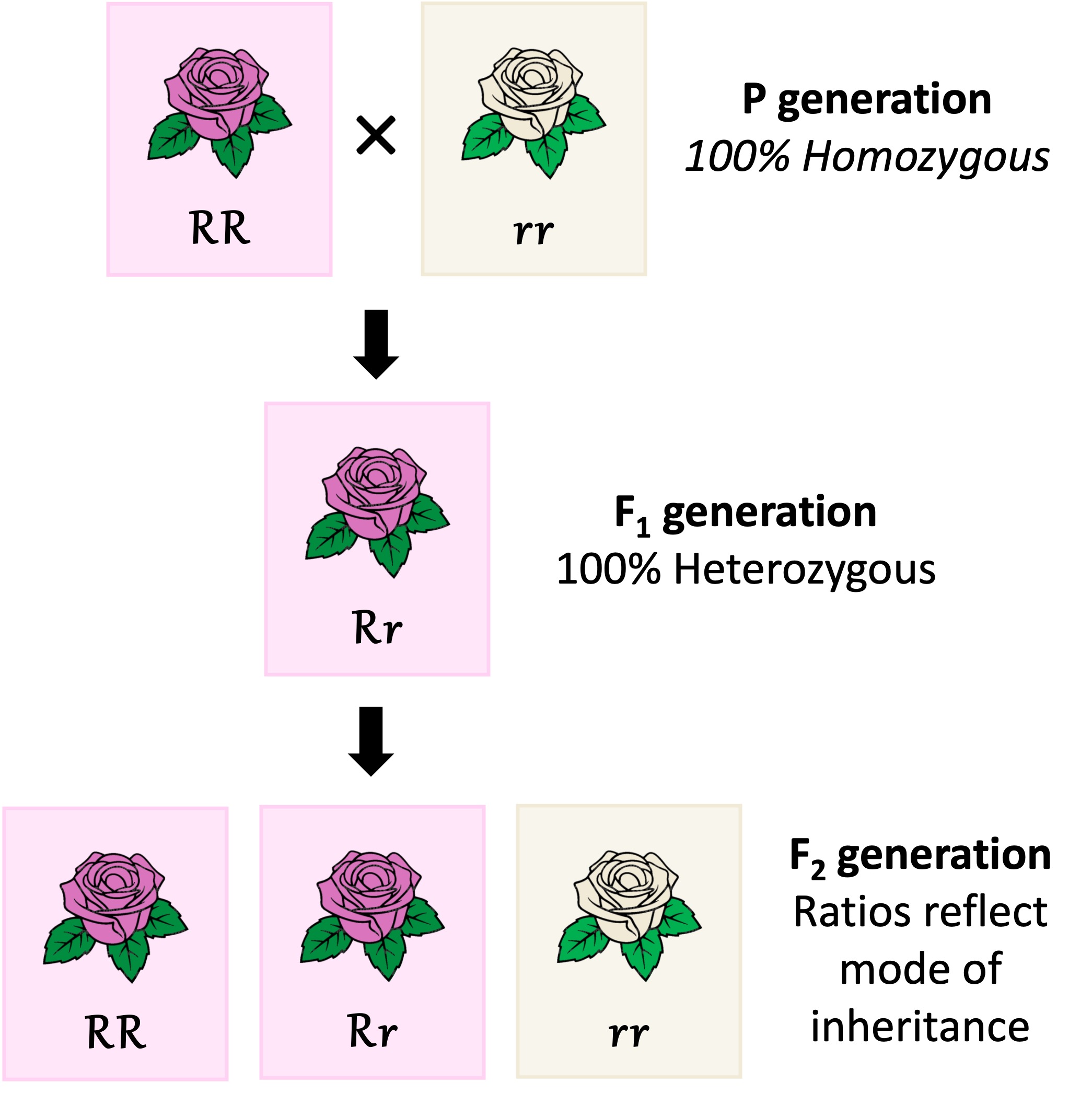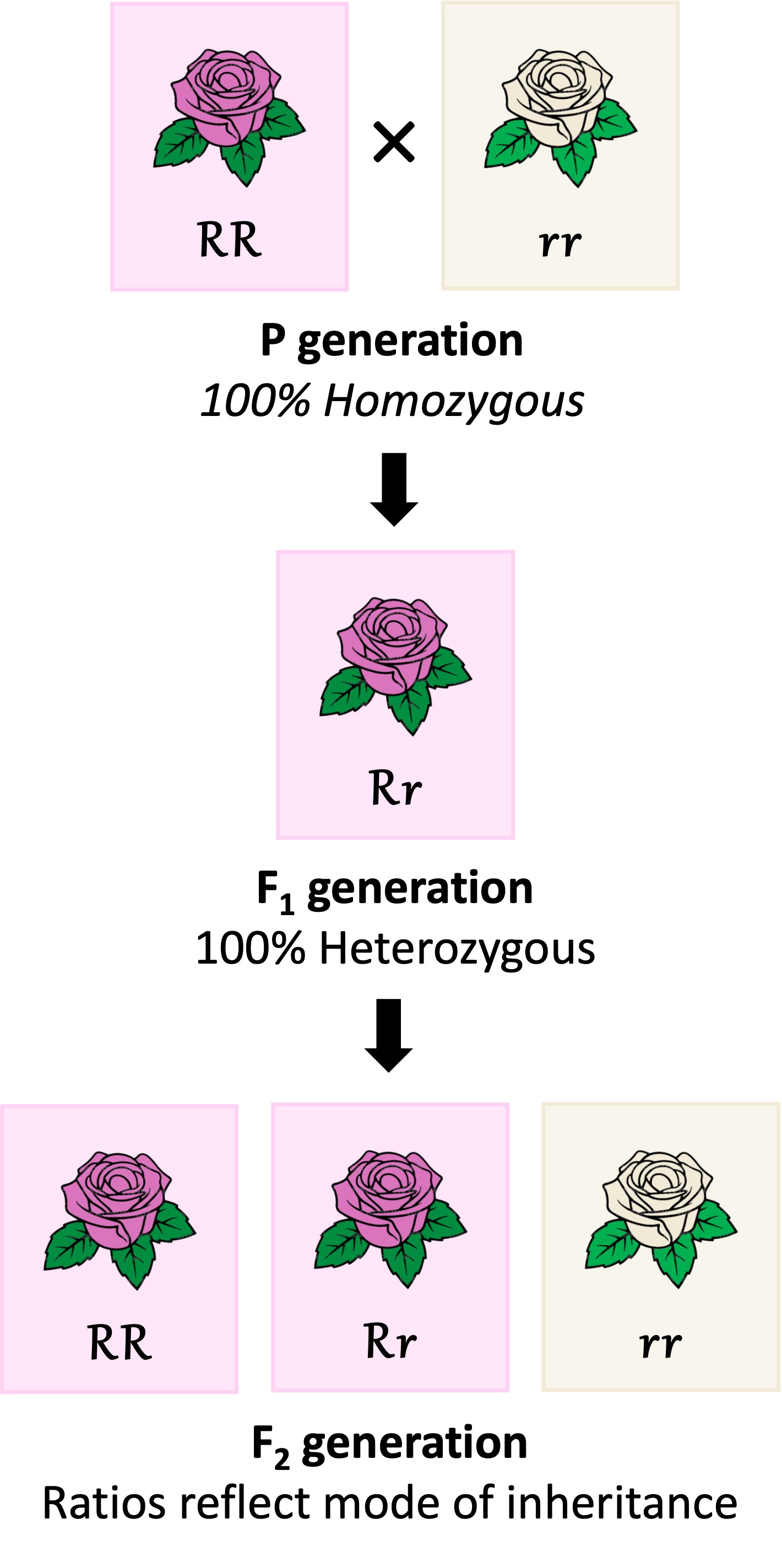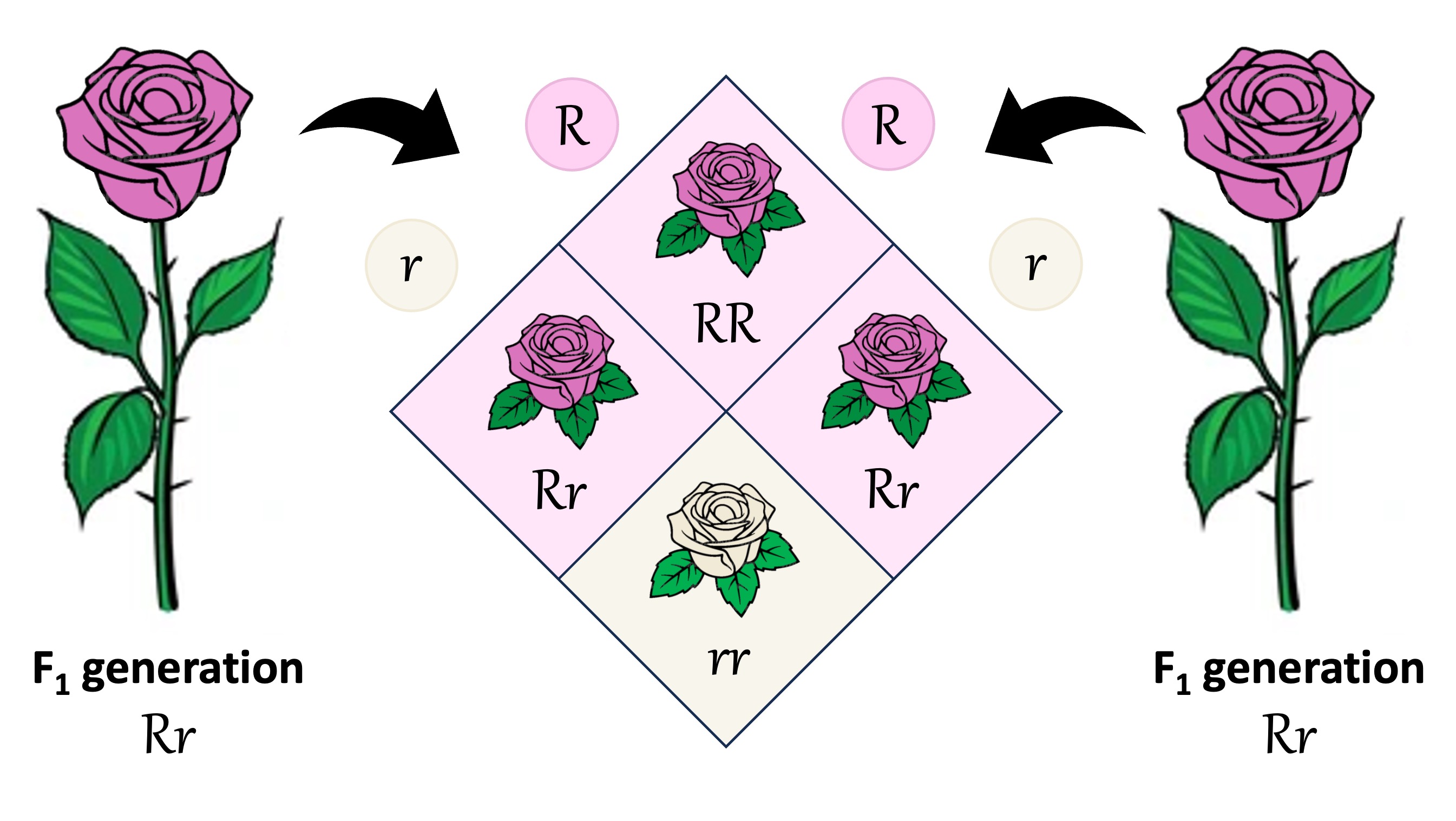

Genetic Crosses
The principles of inheritance can be demonstrated by undertaking breeding experiments in flowering plants
-
Male plants produce gametes as pollen grains which must be physically transferred to the stigmas of female plants (cross-pollination)
-
Because pollen transfer requires an external agent (such as wind or animals), scientists can easily manipulate the breeding of plants to target specific crosses
-
Many plants can produce seeds in short periods of time following pollination, allowing for the rapid collection of data
-
Additionally, certain plants possess both male and female reproductive organs (monoecious) and so are capable of self-fertilisation, which helps to preserve the parental characteristics in offspring


Genetic Crosses
The method for conducting genetic crosses in flowering plants typically involves the following steps:
-
A pure-breeding stock of parental plants is established via self-pollination (this is the P generation)
-
Plants will be considered pure-breeding if they always produce offspring with the same phenotype as the parent (i.e. they are homozygous)
-
-
Parental plants with different chacteristics are then crossed to produce hybrid offspring (this is the F1 generation)
-
If the parental plants are homozygous, all offspring in the F1 generation will be heterozygous
-
-
Self-pollinating members of the F1 generation will produce an F2 generation with a variety of characteristics
-
The phenotypic ratios present in the F2 generation should provide an indication of the mode of inheritance for the chosen characteristic
-
In addition to demonstrating patterns of inheritance, genetic crosses in flowering plants are commonly used to breed new varieties of crops or ornamental plants
Sample Cross



Punnett Squares
The genotypic and phenotypic frequencies expected from a genetic cross can be calculated using a device called a Punnett square
-
When expected frequencies are being calculated for a single gene only, a monohybrid cross is being performed
Monohybrid crosses can be calculated according to the following steps:
-
Designate letters to represent alleles (dominant = capital letter ; recessive = lower case ; co-dominant = superscript)
-
Write down the genotype and phenotype of the prospective parents (this is the P generation)
-
Write down the genotype of the parental gametes (these will be haploid and thus consist of a single allele each)
-
Draw a grid with maternal gametes along the top and paternal gametes along the left (this is a Punnett square)
-
Complete the Punnett grid to determine potential genotypes and phenotypes of offspring (this is the F1 generation)
A statistical analysis (such as the chi-squared test for association) may be conducted to determine if real world outcomes match the expected frequencies predicted by the Punnett square
-
If they do not, then this may suggest that the mode of inheritance is not applicable to the gene under investigation
Punnett Square






